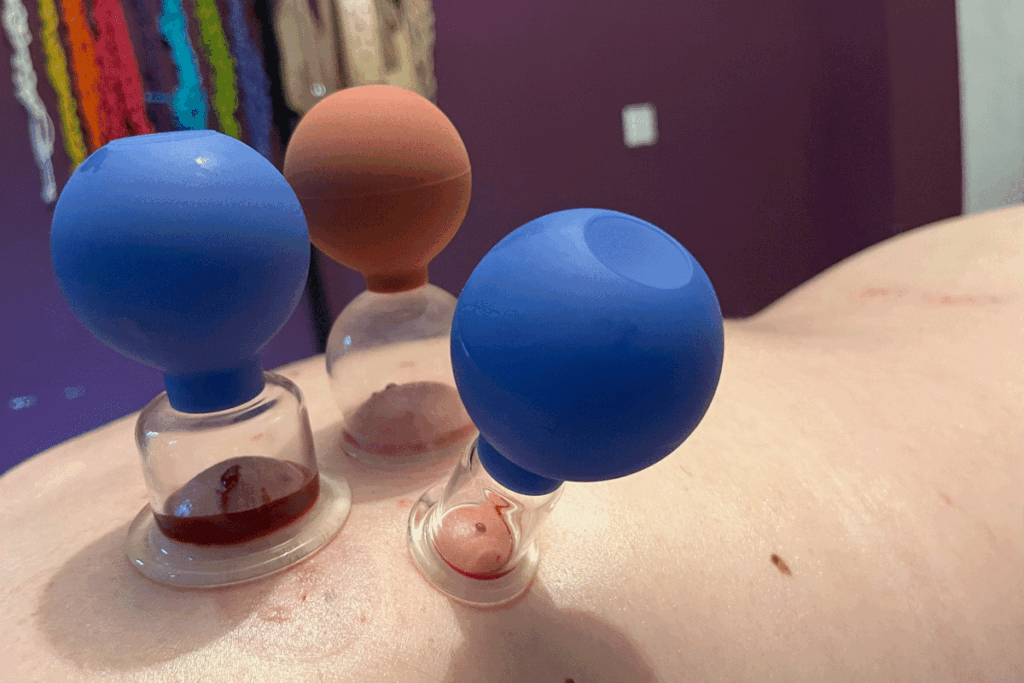Blood cupping
Definition
Blood cupping is an intense ritual within BDSM in which small cuts are made in the skin and vacuum cups are placed over them to draw blood out. It is a form of medically inspired edge play, in which elements of blood play, sadism, and ritual merge into a ceremonial game of letting go, marking, and surrender.

Explanation of blood cupping
Blood cupping is one of the most ritualistic forms of blood play within BDSM. It is derived from an ancient medical technique – wet cupping – in which small incisions are made in the skin and cups are then placed over them. The vacuum slowly draws the blood out and fills the cup. In BDSM, this technique is adopted and reinterpreted: not as a cure, but as an experience of surrender, control, pain, cleansing, or spiritual depth.
The experience of blood cupping is intense. The small cuts feel like pricks or burning scratches, but the vacuum over them can feel tingling, throbbing, or even euphoric.
Preparation and experience
Blood cupping is rarely done impulsively. It is a form of play that requires preparation and experience. Players who work with it often do so from a deep sense of connection, ritual awareness, or sadistic intensity. Some use it as the conclusion to a long session, others as an independent ritual in which, for example, emotions, trauma, possession, or healing are represented.
Although visually impressive, it is not a game for beginners. Blood cupping involves medical knowledge, sterile technique, and emotional depth. In inexperienced hands, it can lead to wound infections, panic, or traumatic reactions. In a safe, careful setting, it can be a transformative experience.
Safety & points of attention
Scalpels or lancets must be new and sterile. Cups must be thoroughly cleaned and disinfected after each use.
Disinfect the skin before and after. Use gloves, medical gauze, and ensure a tidy workspace.
One or two small incisions per cup are sufficient. Too many incisions can lead to excessive blood loss or scarring.
The back is the most commonly used area: large areas of skin, few risk zones. Avoid joints, neck, abdomen, and areas with visible blood vessels.
The cups should not be left on for too long (usually max. 10–15 minutes). Check regularly for swelling, discoloration, or strong reactions.
Related terms Blood cupping
Blood play
Cupping
Medical play
Vacuüm play
More information

